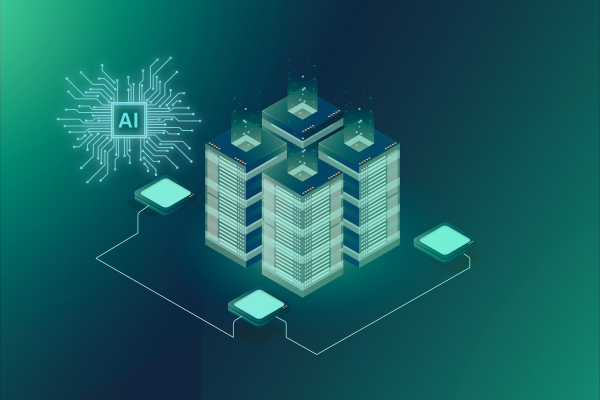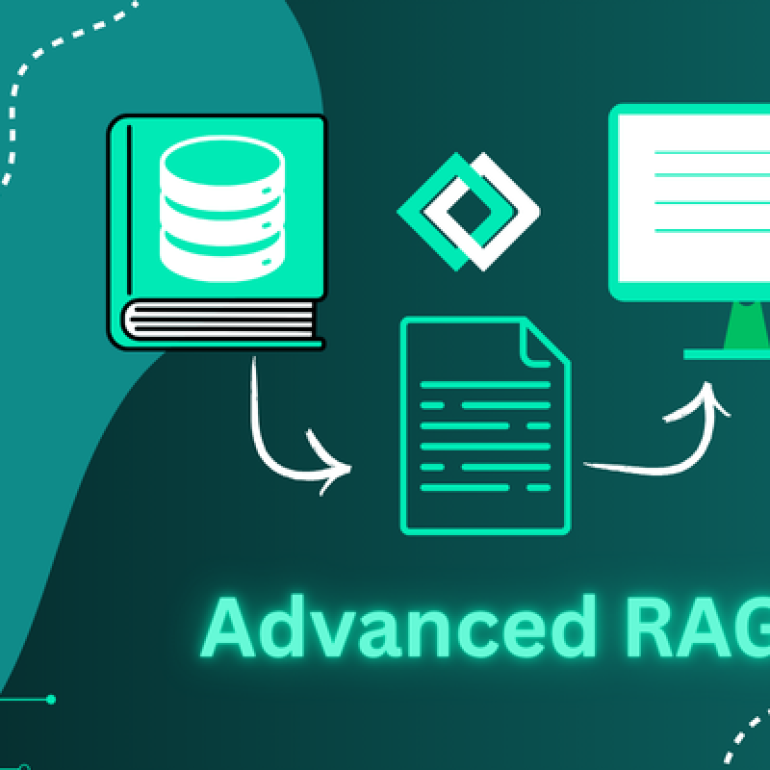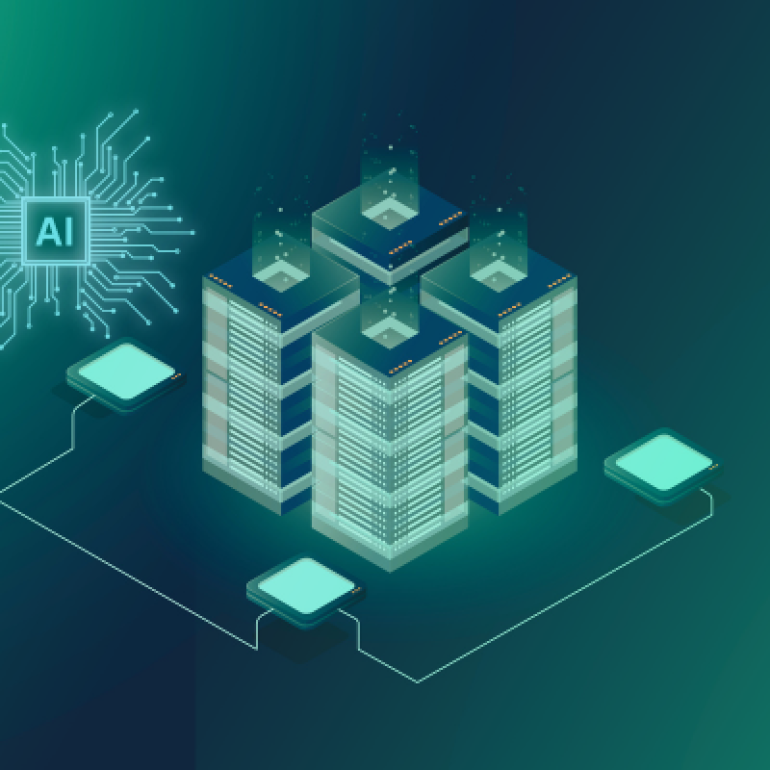- 16 July 2025
- Dr. Chandra Bondugula
The Definitive Guide to AI Tech Stack
Modern artificial intelligence applications actually revolve on the AI tech stack. Modern companies are using artificial intelligence more and more to simplify processes and get market competitive advantages. Understanding this technology becomes crucial for all enterprises.

Introduction
Why Understanding the AI Tech Stack is Essential in 2025
Modern artificial intelligence applications actually revolve on the AI tech stack. Modern companies are using artificial intelligence more and more to simplify processes and get market competitive advantages. Understanding this technology becomes crucial for all enterprises. In this thorough blog, we will discuss all you need to know about AI tech stacks, from critical components and best practices to real-world applications and future developments.
What is an AI Tech Stack?
An artificial intelligence tech stack is an ordered collection of technologies, frameworks, tools, and infrastructure elements cooperating to create, implement, and control AI applications. It serves as the technology foundation for any form of AI-driven project, accelerating the process from data collection to deployment and monitoring.
Understanding the Role of an AI Tech Stack in 2025
It is important to understand how AI tech Sack can help in 2025.
1. Bridges Data and Intelligence:
The stack transforms raw data into actionable insights. It does so by enabling machine learning models to process, analyze, and learn from it.
2. Accelerates AI Development:
By providing pre-built frameworks and reusable components, it reduces the time required to develop complex AI solutions.
3. Supports Customization and Scalability:
Different businesses have unique AI needs. A flexible AI tech stack allows for customization while ensuring the system scales as demand grows.
What are the Core Elements of an AI Tech Stack?
1. Programming Languages:
Python, R, and Java, with Python being the most popular due to its vast library support and simplicity.
2. AI Frameworks:
TensorFlow, PyTorch, and Scikit-learn for machine learning and deep learning applications.
3. Data Processing Tools:
Apache Spark, Hadoop, and ETL pipelines for handling and transforming large datasets.
4. Deployment Platforms:
Cloud services like AWS, Azure, and Google Cloud offer scalable infrastructure, while Docker and Kubernetes handle deployment.
5. Monitoring and Maintenance Tools:
Grafana and Prometheus ensure continuous monitoring and optimization of AI models.
Why does the AI Tech sack matter in 2025?
Guarantures Efficiency:
A well-designed stack increases process efficiency and helps to decrease duplication.
Improves Model Performance:
It offers the frameworks and the computational capability to maximize artificial intelligence models.
Shared tools and environments help AI teams to coordinate perfectly.
Research also confirms that AI tech stacks demonstrate 30% higher profit margins. As a result it demonstrates the direct influence of a well-optimized stack on company results.
An AI tech stack is an assembly of tools, technologies, and frameworks applied in design, development, and deployment of AI applications.
What are the Key Components of an AI Tech Stack?
AI Tech sack has several inbuilt components which becomes important for readers to understand. Let us have a quick look at the components.
Data Layer: The Foundation of AI
- Data Sources: IoT devices, APIs, social media data.
- Data Storage: SQL, NoSQL databases, cloud platforms like AWS S3, Azure Blob Storage.
Processing Layer: Managing Big Data
- Big Data Frameworks: Apache Spark, Hadoop for handling massive datasets.
- ETL Tools: Extract, Transform, Load pipelines for data preprocessing.
Modeling Layer: Building Intelligence
- Machine Learning Frameworks: TensorFlow, PyTorch, Scikit-learn.
- Model Management: MLflow for model tracking and deployment.
Serving Layer: Deployment and Integration
- Deployment Tools: Docker and Kubernetes for scalable deployment.
- APIs for Model Serving: FastAPI, Flask.
Monitoring Layer: Ensuring Performance
- Observability Tools: Prometheus and Grafana for real-time monitoring.
- Performance Optimization: Continuous integration pipelines.
How to Build an AI Tech Stack in 2025 2025? A Step-by-Step Guide
Constructing an artificial intelligence tech stack calls for a calculated approach catered to your company’s requirements. This comprehensive, exact guide will enable you to build a strong and scalable AI tech stack by step:
Step 1: Company Objectives
Specify the particular artificial intelligence applications you wish to handle—such as predictive analytics or recommendation systems. Make sure ROI by matching artificial intelligence objectives with corporate priorities.
Step 2: Choose appropriate tools for data management.
Depending on amount, diversity, and speed of data, select SQL, NoSQL, cloud storage data storage options.
Apply ETL pipelines to effectively preprocess data.
Step 3: Pick suitable machine learning frameworks.
In production, for TensorFlow—scalable, production-ready. Research: PyTorch (flexible and developer-friendly). Think of Scikit-learn as conventional machine learning toolkit.
Step 4: Deploy AI Models Efficiently
Use Docker for containerization and Kubernetes for orchestration to ensure scalable and consistent deployments.
Leverage cloud platforms like AWS, Azure, or Google Cloud for infrastructure.
Step 5: Monitor and Optimize Continuously
Employ tools like MLflow for model tracking and lifecycle management. Use Grafana with Prometheus for real-time performance monitoring and optimization.
Case Study: To run its recommendation engine, Netflix uses Apache Spark and Kubernetes, therefore guaranteeing scalability and real-time performance (source).
Case Study: Netflix’s recommendation system (source) employs Apache Spark and Kubernetes.
What Are the Best AI Tech Stacks Used by Leading Companies?
Leading companies leverage diverse AI tech stacks to power their AI applications, ensuring scalability, flexibility, and top-notch performance. Let’s explore how some tech giants structure their AI tech stacks:
Google: Scalable AI at Massive Scale
1. Core Technologies: TensorFlow (open-source ML framework), Kubernetes (container orchestration), and TPUs (Tensor Processing Units).
2. Use Cases: Google Search algorithms, Google Assistant, and Google Translate.
3. Key Takeaway: Google’s stack focuses on scalability, enabling real-time performance across billions of users.
Facebook: AI for Social Connectivity
1. Core Technologies: PyTorch (deep learning), FAISS (Facebook AI Similarity Search), and Caffe2.
2. Use Cases: Content personalization, facial recognition, and language translation.
3. Key Takeaway: Facebook prioritizes research flexibility and rapid prototyping with PyTorch to enhance user engagement.
Netflix: Personalization at Scale
- Core Technologies: Apache Spark (big data processing), Kubernetes (deployment), and Metaflow (data science framework).
- Use Cases: Real-time recommendation engine and dynamic streaming optimization.
- Key Takeaway: Netflix emphasizes real-time data processing and deployment efficiency to improve user experiences.
Amazon: AI for E-commerce and Cloud
- Core Technologies: AWS SageMaker (ML services), Lex (NLP), and Rekognition (image and video analysis).
- Use Cases: Product recommendations, Alexa voice assistant, and fraud detection.
- Key Takeaway: Amazon’s AI stack focuses on cloud-based scalability and versatility for e-commerce dominance.
Microsoft: Enterprise AI Solutions
- Core Technologies: Azure AI (cloud platform), Cognitive Services (vision, speech, language), and ONNX (Open Neural Network Exchange).
- Use Cases: Enterprise AI applications, productivity tools (e.g., Office 365 AI integrations), and accessibility features.
- Key Takeaway: Microsoft’s stack supports robust AI applications tailored for enterprise-level requirements.
Did You Know? According to C-Suite Strategy, companies adopting tailored AI tech stacks experience a 40% improvement in operational efficiency (source).
These examples illustrate how selecting the right AI tech stack components is crucial for meeting unique business objectives and driving innovation at scale.
- Google: TensorFlow, Kubernetes.
- Facebook: PyTorch.
- Netflix: Apache Spark for real-time recommendations.
These examples show how the right stack components cater to unique business needs.
How Do You Select the Right AI Tech Stack in 2025?
Selecting the right AI tech stack is a critical decision that influences the success, scalability, and performance of AI projects. The ideal stack aligns with business objectives, available resources, and future growth potential. Here’s a guide to select the best AI Tech sack for you company in 2025.
Key Factors to Consider When Selecting an AI Tech Stack
I. Scalability
- Ensure the stack can handle growing data volumes and user demands.
- Opt for cloud-based platforms like AWS, Azure, or Google Cloud for flexible scaling.
II. Flexibility and Modularity
- Select components that can be updated or replaced independently.
- Frameworks like TensorFlow and PyTorch offer modularity for easy customization.
III. Community and Ecosystem Support
- Strong community backing ensures regular updates, extensive documentation, and quick troubleshooting.
- Python-based ecosystems have robust community support.
IV. Cost Efficiency
- Consider both initial setup and long-term operational costs.
- Leverage open-source tools like Scikit-learn and Kubernetes to reduce expenses.
V. Performance Requirements
- For real-time applications, choose stacks optimized for low latency (e.g., Edge AI solutions).
- Utilize GPU acceleration frameworks like TensorFlow with TPUs for high-performance needs.
VI. Security and Compliance
- Ensure adherence to data protection regulations like GDPR and CCPA.
- Implement secure cloud storage and encryption practices.
Questions to Ask Before Making a Final Decision
- Does the stack support multi-cloud and hybrid deployments?
- Can it integrate seamlessly with existing systems?
- What level of technical expertise does your team possess?
- How easy is it to deploy and maintain models over time?
Pro Tip: According to C-Suite Strategy, businesses prioritizing scalable and flexible AI tech stacks report a 40% improvement in operational efficiency (source).
Selecting the right AI tech stack is not a one-size-fits-all process. It requires a balance of technical performance, business needs, and budget considerations, ensuring that the chosen stack drives innovation and growth efficiently.
Challenges in Managing an AI Tech Stack
Managing an AI tech stack comes with several challenges that can impact scalability, performance, and overall efficiency. Here’s an in-depth look at the common hurdles:
I. Integration Difficulties
- Challenge: Seamlessly integrating diverse tools, frameworks, and platforms within the stack.
- Impact: Poor integration can lead to data silos, inconsistent workflows, and operational inefficiencies.
- Solution: Use standardized APIs, adopt microservices architecture, and choose interoperable tools.
II. Data Privacy and Security Issues
- Challenge: Ensuring compliance with regulations like GDPR, CCPA, and industry-specific standards.
- Impact: Data breaches and non-compliance can result in legal consequences and loss of customer trust.
- Solution: Implement robust encryption, secure data storage, and regular compliance audits.
III. Skill Shortages and Talent Gaps
- Challenge: Finding skilled professionals proficient in advanced AI roles like data engineering, ML engineering, and DevOps for AI.
- Impact: Delays in project timelines and suboptimal AI model performance.
- Solution: Invest in upskilling existing teams, partner with AI service providers, or leverage AutoML platforms to minimize dependency on niche talent.
IV. Scalability Constraints
- Challenge: Scaling AI applications to handle increasing data volumes and user demands.
- Impact: Performance bottlenecks and higher operational costs.
- Solution: Utilize cloud-native solutions like AWS, Azure, and Google Cloud, and adopt containerization with Docker and Kubernetes for scalable deployments.
V. High Computational Costs
- Challenge: Training complex AI models demands significant computational resources, leading to increased costs.
- Impact: Budget overruns and reduced ROI on AI projects.
- Solution: Optimize models for efficiency, use cost-effective cloud computing options, and explore green AI practices to reduce energy consumption.
VI. Monitoring and Maintenance Complexity
- Challenge: Continuously monitoring AI models to ensure optimal performance and relevance.
- Impact: Degradation of model accuracy over time, affecting business outcomes.
- Solution: Employ monitoring tools like Grafana and Prometheus, and establish automated retraining pipelines.
Pro Tip: According to Devstree, businesses that proactively address AI stack management challenges achieve 30% faster deployment times and 25% lower operational costs (source).
Understanding these challenges and implementing robust solutions ensures that businesses can manage their AI tech stacks efficiently, driving innovation and long-term success.
What Future Trends Will Shape AI Tech Stacks?
The future of AI tech stacks will be shaped by emerging technologies, evolving business needs, and advancements in AI research. Understanding these trends helps businesses stay ahead of the curve. Let’s explore some key future trends:
I. Low-Code/No-Code AI Platforms
- These platforms are revolutionizing AI development by allowing non-technical users to build AI applications.
- According to Gartner, by 2025, 70% of new AI applications will use low-code/no-code tools (source).
- Why It Matters: It accelerates AI adoption across industries, reducing dependency on specialized developers.
II. Generative AI Advancements
- Large Language Models (LLMs) like GPT-4 and Bard are driving the next wave of AI capabilities, including content creation, design, and software development.
- Stat Insight: The generative AI market is expected to reach $51.8 billion by 2028 (source).
- Impact on AI Tech Stacks: Increased integration of NLP frameworks and real-time processing capabilities.
III. Edge AI for Real-Time Decision Making
- Edge AI brings computation closer to data sources, reducing latency and enabling real-time analytics.
- Example: Self-driving cars use Edge AI for instantaneous decision-making.
- Key Takeaway: Expect increased adoption of IoT-integrated AI tech stacks for faster, localized processing.
IV. AI-as-a-Service (AIaaS)
- Cloud providers like AWS AI, Azure AI, and Google AI are offering AI services on-demand.
- Why It’s Important: Lowers infrastructure costs, allowing businesses of all sizes to leverage AI capabilities.
V. Explainable AI (XAI)
- As AI adoption grows, so does the need for transparency and trust in AI decisions.
- Future Outlook: Regulatory frameworks (like EU’s AI Act) will push for more interpretable AI models.
- AI Tech Stack Implication: Integration of explainability tools like LIME and SHAP.
VI. Sustainable AI
- With AI model training requiring significant energy, green AI practices are gaining traction.
- Stat Insight: Training large AI models can emit as much carbon as five cars over their lifetime (source).
- Trend Shift: Focus on energy-efficient algorithms and infrastructure.
VII. Automated Machine Learning (AutoML)
- AutoML tools like Google’s AutoML, H2O.ai, and DataRobot are streamlining model development.
- Benefit: Reduces the time and expertise needed to build AI models, making AI development more accessible.
These future trends will reshape how businesses build and manage AI tech stacks, fostering innovation, scalability, and sustainable growth.
- Low-Code/No-Code Platforms: Democratizing AI development.
- Generative AI: Enhanced by large language models.
- Edge AI: Enabling real-time decision-making closer to data sources.
- AI-as-a-Service (AIaaS): Cloud solutions for scalable AI applications.
How SHC Technologies Empowers Businesses with AI Tech Stacks
SHC Technologies offers tailored AI-driven predictive analytics solutions, enabling businesses to adopt and implement AI tech stacks seamlessly. With expertise in top AI frameworks and scalable deployment methods, SHC ensures optimal performance aligned with business goals.
Conclusion
A well-structured AI tech stack is vital for successful AI applications. Understanding its components, best practices, and future trends enables businesses to unlock AI’s full potential. With strategic partnerships like SHC Technologies, organizations can streamline AI adoption, ensuring sustainable growth and innovation.
Recent Blogs
Categories
Frequently Asked Questions (FAQ’s)
What is the best AI tech stack for beginners?
Python, TensorFlow, and basic cloud storage solutions.
How do I choose between TensorFlow and PyTorch?
TensorFlow offers robust production support; PyTorch provides flexibility for research.
Which cloud platform is ideal for AI projects?
AWS, Azure, and Google Cloud offer comprehensive AI services choose based on existing infrastructure.
How important is AI infrastructure in an AI tech stack?
Crucial for ensuring scalability, security and real-time performance.




